Limescale on shower heads and faucets is annoying enough – but at least you can remove this staining with a bit of elbow grease.
Removing limescale from spots you can’t reach, like inside your water pipes, is another issue altogether.
In this guide, we’ve discussed the best methods of removing calcium deposits from inside pipes.
📌 Key Takeaways:
- You can remove limescale from inside pipes using commercial scale removers, flushing the pipes with vinegar and baking soda, and soaking removable fixtures in a vinegar bath.
- However, these can’t be used to treat limescale around your entire plumbing system, and won’t prevent calcium deposits from returning in the future.
- The best long-term solution for keeping calcium buildup out of your pipes is to install a water softener system.
Table of Contents
🤔 Why Remove Calcium From Your Pipes?
Wondering why calcium buildup is a problem?
If you have hard water, calcium buildup will become more and more of a problem the longer you leave it.
The more the calcium accumulates, the thicker the scale will become. Water flow will reduce over time, and the space in your pipes will become more and more restricted.
When limescale accumulates in your water supply, you may experience issues with:
- Low water pressure and low flow
- Clogging in drains and shower heads
- High water heater energy use
- Hot water that’s not properly heated
It’s more difficult to remove scale that has accumulated over a period of decades because it’s thicker, tougher, and more ingrained into your surfaces.
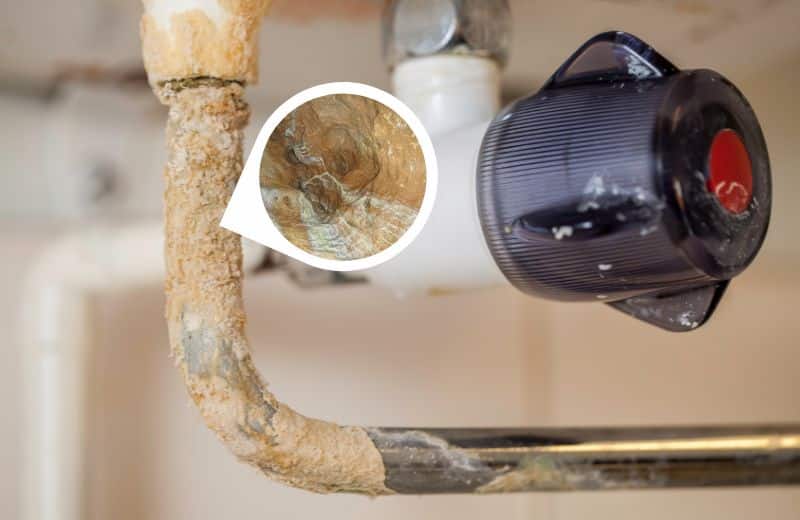
📖 How To Remove Calcium Buildup In Pipes: 3 Methods
Let’s take a look at the three best short-term methods to remove calcium buildup in pipes in your home.
Method 1: Vinegar & Baking Soda
If you want to tackle calcium buildup without the chemicals, use vinegar and baking soda.
You will need:
- Bucket of water
- Clean cloth or rag
- 1/2 cup vinegar
- 1/2 cup baking (bicarbonate) soda
- Sponge
Follow these steps:
- Boil a pot of water and pour it into a bucket.
- Pour the baking soda and vinegar into your drain.
- Cover the drain with a clean cloth or rag.
- Leave the mixture for 5 minutes to take effect.
- Pour boiling water into the drain.
- Wipe down the drain opening with a sponge dipped in vinegar.
Vinegar and baking soda offer an effective natural solution against calcium build-up. If you don’t have any vinegar on hand, you can use lemon juice in its place, which has similar acidic properties and can also effectively tackle drain clogs and lime scales.
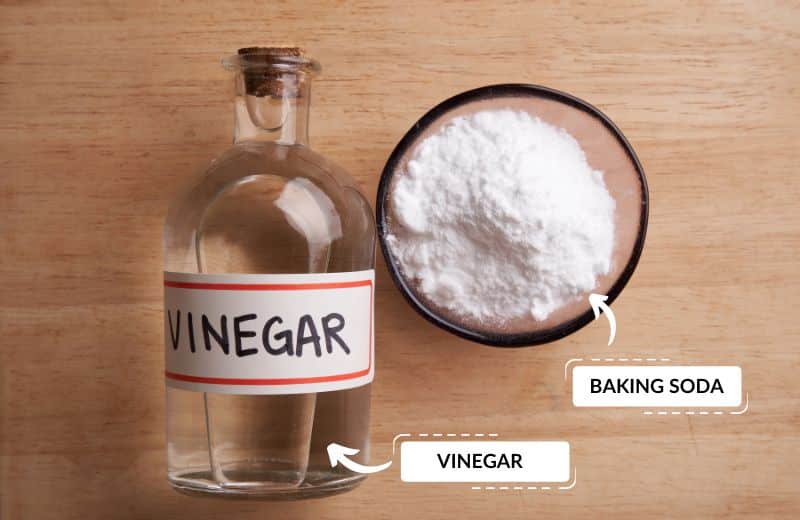
Method 2: Calcium, Lime, & Rust Remover Products
There are a few commercial chemical cleaners that are particularly effective at removing mineral build-up from pipes, including calcium, lime, and rust removers.
These cleaners often contain muriatic acid, which is intense enough to remove severe scaling from your pipes, fixtures, shower drain, and more.
When using a commercial cleaner to remove calcium buildup in your pipes, make sure to follow the instructions on the bottle carefully, wear protective clothing, and wash your hands thoroughly after use.
Remember that many of these harsh chemicals are dangerous to your health, so be wary of using them in pipes that supply your drinking water.
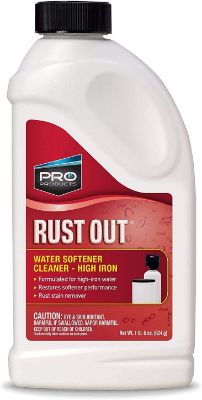
Method 3: Vinegar Soak
Certain fixtures attached to your pipes (such as your shower head) can be removed and soaked in a vinegar bath to remove caked-on limescale.
You will need:
- Wrench & pliers
- Cleaning cloth or rag
- Vinegar
- Tupperware tub
Follow these steps:
- Wrap a cleaning cloth or rag around the fixture that you want to remove.
- Use a wrench and/or pliers to remove the fixture.
- Fill a Tupperware tub (or any other tub) with vinegar and soak the fixture overnight.
- Rinse the fixture in clean water and re-attach it to your plumbing system.
If you don’t have the required tools or you want to clean a fixture that’s not easily removable, fill a plastic bag with vinegar, then attach this bag to the fixture (making sure it’s properly submerged) and leave it overnight. Scrub with a sponge the next morning.
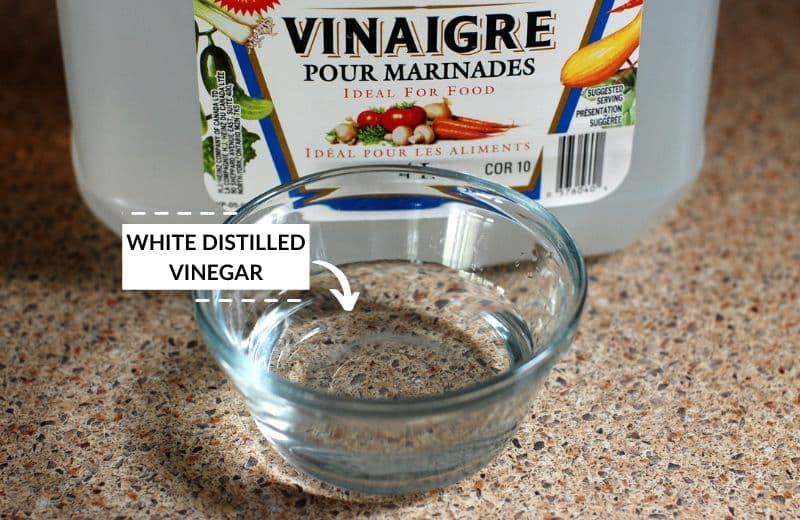
📋 How To Remove Scale From Other Appliances & Fixtures
Here are a few of our top tips for removing scale from other fixtures and appliances in your home:
- For scaling in dishwashers – Pour 1 cup of white vinegar into your dishwasher, then let it run a normal cycle. Repeat once a month to prevent excessive scaling.
- For coffee makers and kettles – Add white vinegar to the water reservoir and brew for one cycle. Pour it out, then rinse the reservoir several times to remove the lifted scale and get rid of the vinegar smell.
- For shower doors – Soak paper towels in a bucket of warm vinegar and stick them to your shower screens. Leave them for about five minutes, then remove and wipe the screens clean with a cloth.
- For washing machines – Pour 1 gallon of vinegar into your washing machine and run a hot water cycle. Repeat once monthly.
- For toilets – Pour 2 cups of white vinegar into your toilet bowl, then let it sit for several hours. Use a toilet brush to scrub the bowl, then flush. Repeat until most of the buildup has been removed.
- For faucets – Soak paper towels in vinegar and drape them around the faucets. Leave for a few hours or overnight, then remove and scrub the build-up with a damp cleaning cloth.
Related: Does coke remove limescale?
💯 The Best Long-Term Scale Prevention Solution: Water Softeners
The methods we’ve mentioned above are good options if you want to temporarily get rid of scale. But they have their limitations.
For a start, many methods can only be used to remove calcium buildup from your drain pipes, either because they use dangerous chemicals or because accessing your main water pipe at its entry point into your home is usually impossible.
That means you won’t be able to protect your entire plumbing system from limescale, so you’ll still notice the effects of calcium buildup over time.
Plus, none of the scale-removal methods mentioned in this guide are permanent solutions against water hardness.
The only way to protect your entire water supply from limescale – today and years into the future – is by installing a water softener.
Water softeners use a process called ion exchange, which swaps calcium and magnesium minerals (responsible for calcium build-up) with sodium ions (which have no aesthetic effects). Softeners don’t just prevent future scale formation – they also remove calcium buildup in pipes and fixtures over time.
It may take a few years for a softener to completely break down and remove the existing mineral deposits in your pipes, but you should eventually be left with virtually no scale in your plumbing system.
The average cost of a conventional salt-based water softening system is $800-$1,600.
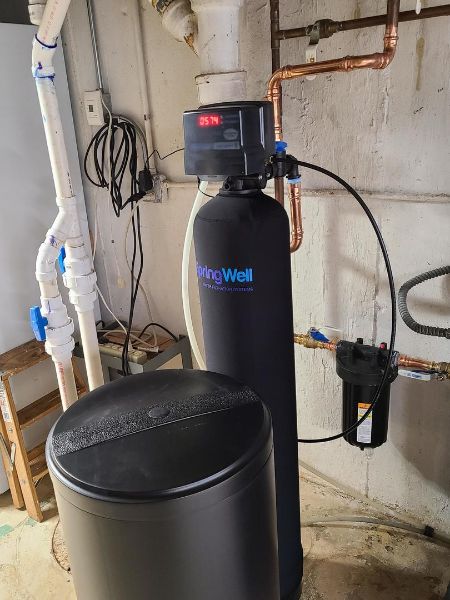
📑 Final Word
If you have hard water, limescale is unavoidable.
Luckily, though, there are ways to remove calcium buildup from your pipes, so you don’t have to deal with the effects of hard water – like slow flow, clogging, and unsightly scale deposits – forever.
The best permanent solution to hard water scale is a water softening system. It’s worth investing in a softener if you want to eliminate scale buildup entirely by converting hard water into soft water.

